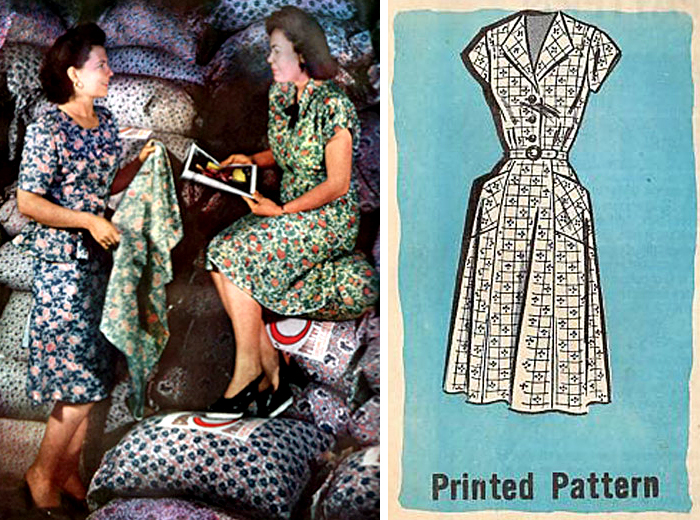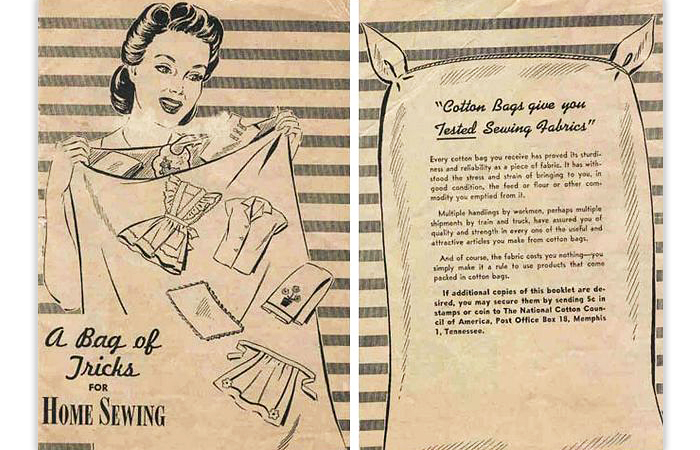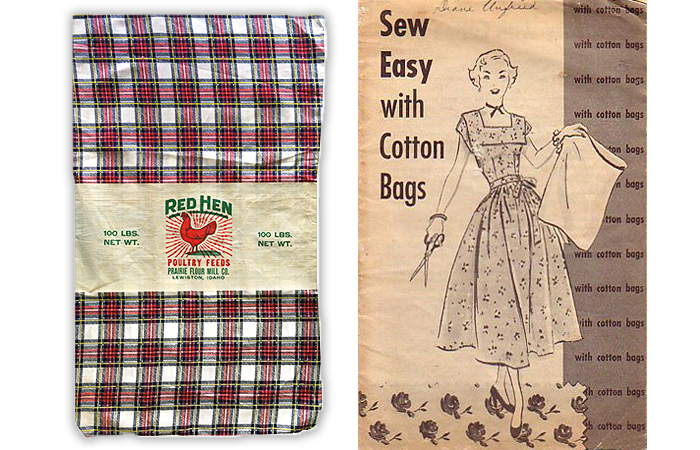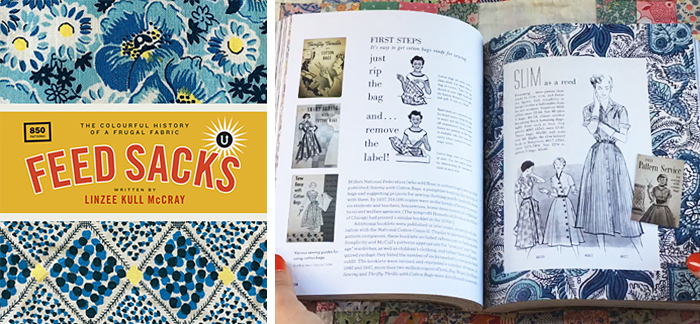Feed Sack Sewing
15th June 2018
Gone are the days when we bought our flour, rice or animal feed in cotton bags or sacks. Some of us may still own the odd cotton flour bag, but paper and plastic have taken over completely. However, the humble feed sack was once a mainstay of a family’s wardrobe, resulting in a fascinating sartorial and social history.

We are encouraged to recycle as much as possible nowadays, but not so long-ago recycling had little to do with environmental concerns, rather it was sheer necessity. In the United States during World War II, recycling was often how families would clothe themselves and the cotton feed sack played a vital role.

The use of feed sacks for making clothing and household textiles began in the early 19th Century. At that time, cloth packaging began to replace tin and wooden boxes for animal feed and foodstuffs such as flour. Early on, these bags were made of heavy canvas or burlap, but by the 1920s cotton bags were being used, a versatile and easy to use fabric perfect for repurposing.

Initially, the bags were white cotton with the feed manufacturer’s logo printed on it. However, when bags began appearing with stripes or gingham print, the creativity of the thrifty housewife came into its own. A feed bag would be unpicked and cleaned, then the fabric used to make clothing, toys, towels or any one of a multitude of household necessities.
Feed sack manufacturers soon caught on and began to commission artists to produce attractive prints.
Manufacturers soon realised products were being purchased based on the pattern of the fabric, rather than the content inside the bag itself.
As such, competition began in earnest resulting in a plethora of different fabric prints and styles.
During World War II when textile production was limited to mainly military purposes, pattern books and advertisements encouraged the use of feed sacks for sewing as a patriotic duty.

Feed sacks were produced in a wide range of patterns and colours (source)
After the War, traditional fabrics were soon widely available again and, despite feed sack manufacturers creating sewing competitions to encourage women to continue using their products, paper packaging was far more economical. By the late 1960s, feed sacks were all but a memory.

Feed Sacks book by Linzee Kull McCray (source)
The beauty of these utilitarian items has been celebrated in an amazing book by Linzee McCray, published by Janine Vangool and her inspired team at Uppercase. This volume is part history, part vintage textile eye-candy and is the definitive guide of this lost resource. Beauty from simplicity, born out of necessity. It cannot help but give us pause. To learn more about the book, visit their website HERE.
